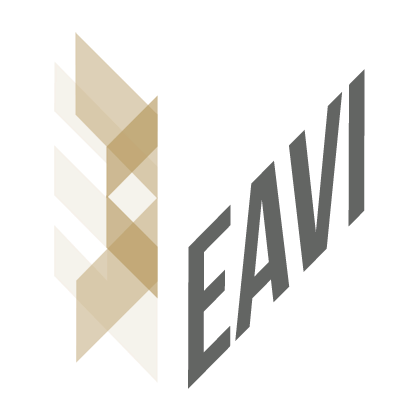© 2025 Atau Tanaka. All Rights Reserved | RSS | Website by: Readysalted | Supported by: EAVI and Goldsmiths Digital
Projects
Locative Media | Network Music | Sensor Performance | Sound & Image
Locative Media
Net_Dérive

Net_Dérive is an artwork in the domain of location sensitive mobile media art. It is an installation piece extending beyond the confines of a gallery, to include the urban environment. Conceived for participative use from advanced mobile telephones, they call upon techniques from interactive music applied to new contexts that include the interplay of sound and image, an exchange between participants in the gallery and participants in the streets, and the creation of an abstract narrative from audiovisual media captured on multiple mobile devices. Deployed on portable, networked, location-aware computing devices, we seek to create a kind of musical instrument, thinking of the city-as-instrument.
Collaboration with Petra Gemeinboeck and Ali Momeni. Project intern Gary Tunak
Produced at Sony CSL Paris
Exhibited at the Maison Rouge during Intensive Science
Network Music
Global String
Global String, a collaboration with Kasper Toeplitz, is a multi-site network music installation, connected via the internet. It is a musical instrument where the network is the resonating body of the instrument, by use of a real time sound synthesis server.
The concept is to create a musical string (like the string of a guitar or violin) that spans the world. Its resonance circles the globe, allowing musical communication and collaboration among the people at each connected site. The installation consists of a real physical string connected to a virtual string on the network. The real string (12 millimetres in diameter, 15 metres in length) stretches from the floor diagonally up to the ceiling of the space. On the floor is one end-the earth. Up above is the connection to the network, to one of the other ends somewhere else in the world. Vibration sensors translate the analog pulses to digital data. Users strike the string, making it vibrate.
Prométhée Numérique
Prométhée Numérique is a participatory acoustic media art work for broadcast. Sounds submitted by internet- and mobilephone-users form generative materials of anonymous origin. Media streamed into the performance from scheduled artists in different locations contribute to the codes and structures of the entity. This participatory internet activity creates an living data-organism that constitutes the continuing evolving component of the project.
During the performance and live radio broadcast the composer takes over, activating and wiretapping the sleeping entity, ascertaining its physiognomy by filtering its amorphous state and building form. The performance/live radio piece is the spy that opens a media window to eavesdrop the creature at the time of the performance. The composer will sculpt visual and audio elements to create a dramaturgy of interpretation.
The process evokes the listener’s aural and visual imagination of an electronic being which can be all-embracing as well as distant, organic as well as algorithmic, at once life-like and artificial.
The piece addresses the eternal myth that there might be life and identity in the machine. By nurturing and shaping an entity of binary data, the project invites the participants to enter the creative process, while at the same time confronting them with the irony of struggle and release of absolute control.
Commission from Südwestrundfunk (SWR2) hörspiel. Performed at ZKM Karlsruhe Germany, IAMAS Gifu Japan, and Société des Arts Technologiques (SAT) Montréal on March 2002 as part of the Intermedium Festival of radio art.
Atau Tanaka, with
Antoine Schmitt, Peter Hanappe, Gregory Pignot, Reiko A, Shunichiro Okada, Zack Settel
Sabine Breitsameter, dramaturgue
Sensor Performance
Adam & Atau – 4 Hands iPhone
Adam & Atau exploit a commonly available consumer electronics device, the Apple iPhone, as an expressive, gestural musical instrument. The device is well known an iconic object of desire in our society of consumption. The iPhone can play music as a commodity, and this is the way most listeners interact with it. Adam & Atau reappropriate the iPhone and its advanced technical capabilities to transform the consumer object into an expressive musical instrument for concert performance. In a duo, with one in each hand, they create a chamber music, 4-hands iPhone. The accelerometers which typically serve as tilt sensors to rotate photos in fact allow high precision capture of the performer’s free space gestures. The multitouch screen, otherwise used for scrolling and pinch-zooming text, becomes a reconfigurable graphic user interface akin to the JazzMutant Lemur, with programmable faders, buttons, and 2D controllers that control synthesis parameters in real time. All this drives open source Pure Data (PD) patches running out of the free RJDJ iPhone app. A single advanced granular synthesis patch becomes the process by which a battery of sounds from the natural world are stretched, frozen, scattered, and restitched. The fact that all system components – sensor input, signal processing and sound synthesis, and audio output, are embodied in a single device make it very different than the typical controller + laptop model for digital music performance. The encapsulation in a self-contained, manipulable object take the iPhone beyond consumer icon to become a powerful, expressive musical instrument.
BioMuse
???
DSCP
DSCP is a piece for chamber orchestra and two electronic instruments that capture performer gesture. The Theremin is a historical instrument using electrostatic field perturbation. D-Beam infrared sensors generate MIDI output from hand distance. Each instrument has a unique way to capture the performance gestures of an instrumentalist.
The gestural instruments bring the electronics to a performative mode of articulation close to the acoustic instruments. The choice of sound materials are entirely extensions of acoustical sounds. The fundamental materials are extremely simple – most concentrating on one frequency D (294 Hz). The musical investigation comes by zooming into and expanding each simple sound into a rich timbral universe.
Commissioned by Musiques Nouvelles, Mons Belgium, and Artzoyd.
Premiered in 2003 in Mons, conducted by Jean-Paul Dessy, with Yukari Bertocchi, infrared sensors, and Laurent Dailleau, Theremin.
Performed in 2004 in Dusseldorf
CD release on Sub Rosa SR192, “Experiences de Vol”
Sensorband
Sensorband is a trio of musicians using interactive technology. Gestural interfaces – ultrasound, infrared, and bioelectric sensors – become musical instruments. The group, Edwin van der Heide, Zbigniew Karkowski, Atau Tanaka, each soloists on their instruments for over six years, formed Sensorband to create a performance ensemble. Edwin plays the MIDIconductor, machines worn on his hands that send and receive ultrasound signals, measuring the hands’ rotational positions of and relative distance. Zbigniew activates his instrument by the movement of his arms in the space around him. This cuts through invisible infrared beams mounted on a scaffolding structure. Atau plays the BioMuse, a system that tracks neural signals (EMG), translating electrical signals from the body into digital data. Together, Sensorband creates a live group dynamic, bringing a visceral physical element to interactive technologies. Sensorband’s projects center around the theme of physicality and human control/discontrol in relation with technology.
Sensorband stopped performing in 2003 after 10 years.
S_S_S
Cecile Babiole, Laurent Dailleau, and Atau Tanaka create together a dynamic sound/image environment. S.S.S is a trio performing visual music with sensors and gestures. They create a work of sound and sight, a laptop performance that goes beyond with the intensity of bodies in movement. Going beyond media: music that is more than a soundtrack, images going further than video wallpaper. A three-way conversation modulating sonic and luminous pulse and flow.
Sensors capture gesture and corporeal movement, translating them into digital data:
* Ultrasound sensors measure the distance between the performer’s hands and her machine, allowing her to articulate 3D imagery, navigating in color, scale, texture… * The Theremin, historical electronic instrument invented in 1919, an oscillator responds to perturbations of electrostatic fields based on the distance of the hands and body to the instrument… * The BioMuse places gel electrodes on the performer’s forearms, analyzing EMG biosignals. Muscle tension through concentrated movement allows the musician to sculpt sound synthesis.
S.S.S’s singular approach brings them to present their work in a wide range of contexts in music and the digital arts. They are equally at home performing in galleries or underground spaces, in arts centers or research laboratories.
Sound & Image
9m14s Over Vietnam
Bondage
Bondage is a piece about enigma – on mystery and fantasy. It is digital in nature, but analog on the surface. Technology no longer holds mystery in modern society, it is now a part of everyday life. Culture and far away places, however, still keep a power of fascination. In Bondage, I use wood and paper as a vehicle for digital image and sound. On it I project iconography of Japan, the sliding paper screen (shoji), a woman in a kimono. We feel that we know this culture, but yet it escapes us. The woman, as we find out, is in bondage – this image generates the sound universe that we hear as a summation of sine waves.
It is a personal piece situating myself as Japanese-American and as an artist-researcher. The work is made of Japanese elements but would never have been done by a Japanese artist. The sounds are sine-waves, but not in a typical ultra-clean design space. The viewer’s presence completes the loop, uncovering parts of Nobuyoshi Araki’s original photograph, scanned left to right in frequency bands producing sound. The quadraphonic sound system is oriented vertically in the plane of the paper screen. The fibers of the paper give an organic surface for the digital pixels.
The result is a total environment, a concentrated space where sound meets image, but where interaction is not pushed to the fore. Instead, I attempt to create a magical space, drawing upon the voyeuristic fantasies of the viewer as he tries to access the untouchable woman on the other side of the screen.
Bondage was commissioned by Le Fresnoy and was exhibited at:
and toured with ICI in What Sound Does a Color Make? curated by Kathleen Forde, going to:
![]() Eyebeam, NYC
Eyebeam, NYC
![]() University of Hawaii Art Gallery
University of Hawaii Art Gallery
![]() CAVC, Baltimore
CAVC, Baltimore
![]() Govett-Brewster Gallery, New Plymouth, New Zealand
Govett-Brewster Gallery, New Plymouth, New Zealand
![]() Wood Street Galleries, Pittsburgh
Wood Street Galleries, Pittsburgh
photograph above, PER (Pierre-Emmanuel Rastoin)
production : le Fresnoy, Studio National d’Art Contemporain, Parc de La Villette
Thank you: Nobuyoshi Araki for permission to use his photograph, Yoshiko Isshiki for access to his collection
Sound/image synthesis engine: Ali Momeni
Bondage.rmx
Bondage.rmx is the CD recorded release version of the installation work. It is music created using as its sonic basis, photographs of the Japanese photographer, Nobuyoshi Araki. The source photographs were scanned and analyzed using the software, Metasynth. The photograph becomes the sonogram representing the harmonic spectrum of the resulting sound. The image domain becomes the frequency domain – time traveling left to right in the photo, frequency on the vertical axis, and panning determined by color. Manipulation of the source image result in transformations of the sound. Different photos and manipulations of the photos were used to produce a series of source sounds which were then composed.
Bondage.rmx was released on CD on:
![]() Or Some Computer Music 2, OR/Touch Records, curated by Russell Haswell
Or Some Computer Music 2, OR/Touch Records, curated by Russell Haswell
![]() Bip Hop Generation Vol. 3 (remix)
Bip Hop Generation Vol. 3 (remix)









